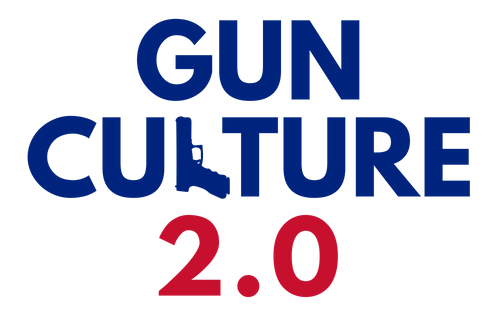Self-defense is a problem-solving genre. So far, so good. We solve problems all the time. The challenge is that solving self-defense problems is not like solving math problems where (except in extremely exceptional cases) there is a single correct answer. [See Mathematical Aside below.]
When it comes to self-defense we often become Aspergerians, looking for invariant, universally applicable laws of behavior. We want a mathematically-based physics of self-defense where E=mc2 and F = ma and dS > 0 all the time.
But self-defense is not so formulaic. There is no, “If A, then B.” Self-defense is fluid and interactive. The problem we think we are solving may turn out to be something else altogether. Also, the problem changes as we engage it. Armed self-defense, then, is more a form of art than a mathematics or physics. (Hence the idea of gunfighting as a martial art.)

From the outset, FPF Training’s Concealed Carry: Advanced Skills and Tactics (CCASAT) highlights the complexity of the situations we may face as defensive gun owners. Actually, lead instructor John Murphy highlights this even before the start of class in a series of 10 YouTube videos he recorded and assigns as “homework” to students.
The videos cover a wide range of topics including criminal assault pre-incident indicators, managing conflict while armed, third party interventions, and lethal force tactics.
During the two-day course, we shot somewhere between 500 and 600 rounds. We were asked to shoot accurately (Dot Torture), quickly (timed draw to first shot), quickly and accurately (F.A.S.T.), balancing speed and accuracy (falling plates), at distance (step-back drill), in proximity (from retention), while turning (battle drill), while moving on a 3D target (Thicc Shawn), strong hand and support hand only (5 yard round up), and more.

As an advanced skills and tactics course, Murphy doesn’t teach marksmanship per se (though his Assistant Instructor Tim Chandler spent a great deal of time working with Sandy and me on basics of grip, stance, sights, and trigger, to our benefit). But running us through both basic and advanced drills/tests allowed us to taken an inventory of our shooting skillset and see where our marksmanship faltered.

What makes this an advanced course is that it highlights the interaction between “hard” (tools) and “soft” (interpersonal and decision-making) skills that armed citizens should cultivate to fulfill this role well. These include the previously discussed use of pepper spray and “street encounter skills” that give the defensive gun carrier still more options “beyond the gun.”
Perhaps the most important novel aspects of this course is the scenarios that Murphy creates and runs his students through. They allow the student to utilize the full range of their hard and soft skills in problem-solving situations for which there is no single, pre-determined correct answer.
In these scenarios Murphy gives both verbal and visual cues to which students must respond. The visual cues are provided by different lasers on two SIRT training pistols he carries.
If a picture is worth 1,000 words, then a video is worth 100,000, so below are videos of 3 scenarios Murphy ran with students (including my wife and Annette Evans, about whom I have written before).
Annette Evans’s scenario escalates from verbal harassment to the threat of a physical assault. Murphy actually gave Evans a visual cue that suggested a lethal threat, but she did not mechanically draw and fire. The attacker backed down and she was able to get on with her life. (Note that Evans actually had pepper spray already in hand when she draw her gun.)
This second student used the “fence” position with his hands and verbal management to deal with an “unknown contact,” as we learned in the course. Similar to Evans’s scenario, but escalating more quickly, he went to the gun, but achieved a successful “defensive gun use” (DGU) without having to fire a shot.
In this third case, the student (my wife Sandy) was approached by someone asking for money. As she would likely do in real life if the person appeared nonthreatening (which Murphy indicated with his SIRT gun), she gave some money. But things quickly escalated and she drew and fired in response to the verbal and visual cues Murphy gave her.
Each of these scenarios highlights the art rather than science of self-defense. There is no single correct “answer” to the three problems that were presented.
Of course, just because there are no mathematical formulas or physics-like laws we can use to solve self-defense problems, does not mean that anything goes. When practiced at a high level, every form of art is a discipline. It involves techniques that are cultivated over time through practice.
So, too, with the art of self-defense. FPF Training’s Concealed Carry: Advanced Skills and Tactics shows John Murphy to be an important teacher of this art.
* * *
MATHEMATICAL ASIDE: I asked two mathematician friends to suggest math problems for which there are more than one correct answer. One suggested x^2=x, where x=0 and x=1 are both solutions. But the other said in fact if a student were asked to solve this equation on an exam the single correct answer would not be x=0 or x=1, but x=0 AND x=1.


[…] post from my experience at FPF Training’s Concealed Carry: Advanced Skills and Tactics (CCASAT) course, taught by John Murphy last summer, got lost in my drafts folder. Well, as we used to say in […]
LikeLike
[…] The Art (Not Mathematics or Physics) of Armed Self-Defense […]
LikeLike